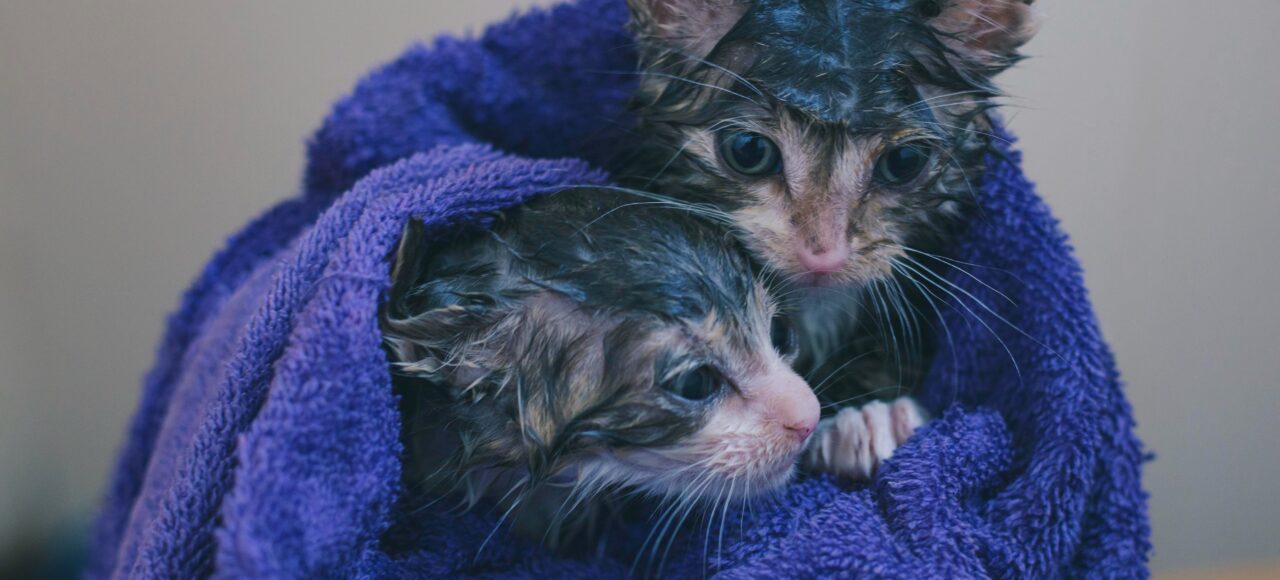
Getting Your Non-Profit Started: Animal Rescue
Ever thought of starting your own non-profit? Do you love animals? Your community may benefit from a shelter or similar non-profit. Indeed, many cities and towns across the United States have trouble with loose, abandoned, or stray animals. Current rescues and shelters try their best to save as many as possible but often run into overcrowding issues. An animal rescue can help improve a community in many ways.
Adding new rescues or foster homes can help ease the burden on current shelters. Additionally, new businesses can help save the lives of more animals who would otherwise be left outside or euthanized. Your non-profit can improve the lives of your community’s people and pets.
As with any non-profit or business, running an animal rescue is no easy task. It takes time, effort, and money. Often, non-profit organizations fail due to a lack of financial understanding or funding. Thus, it’s important to know what you’re getting into ahead of time. You must figure out how to effectively fundraise and write grant proposals. You should also be ready to invest a large portion of your time getting the rescue running. Ultimately, taking care of your community’s animals is worth the effort.
Notably, when eager entrepreneurs think of how their business will run, they fail to consider the scope of the operation. You should plan on starting small to remain sustainable. Remember, any assistance you can offer initially is something that wasn’t there before. You may only be able to take in a stray or two at once. Maybe you can learn how to care for badly injured animals that your local shelter can’t handle. Regardless, you probably won’t be able to open a full facility right at the start. Building realistic goals keeps your business from closing down and allows you to help more animals.

10 Steps to Start an Animal Rescue
Below, we will go over ten steps to starting an animal rescue. They are in no particular order but will help you find success with your non-profit. Indeed, your journey may look very different from other rescues. You may start out of your own home while others have a facility already prepared. Similarly, some will have staff or fosters ready before they bring in their first animal.
Keep reading to learn more about how you can start an animal rescue.
1. Research, Research, Research
A huge part of starting an animal rescue is research. You must know your community’s needs, your state’s regulations, the general cost of supplies, and more. For example, to register as a non-profit, you must sign a great deal of paperwork and follow certain rules. Similarly, if your mission is to help farm animals, but you legally cannot house them at your residence, you must have somewhere else to care for them.
If you live in a small community, you might have trouble figuring out the exact needs of the town. Sometimes it’ll be obvious – you head to the local park and find an abandoned or stray animal every week. However, if you’re unsure, you should consider checking social media or asking pre-existing rescues.
Without research, you may find yourself lacking funds, providing an unneeded service, or even violating laws.
In addition to the above, we recommend research marketing techniques for animal rescues, insurance costs, and supply and resource availability. Notably, you’ll need a vet nearby to take care of any animals that come through your door. Is there one nearby that you can work with? Can they handle all services, including emergency surgery? These are important factors you must plan for ahead of time.
Supplies and Repeat Costs
You will have to regularly replenish your rescue’s supplies. For example, you’ll need to buy food, litter, toys, and bedding often. Veterinary bills are expensive, and you must also account for transportation costs. Additionally, you may need to buy replacement kennels or travel carriers if you run into an aggressive animal. And on top of all of that, animals are messy. You must purchase cleaning supplies and replacements for fabric beds and blankets.
2. Prepare Yourself
On top of logistics, you must be emotionally and physically prepared to run your non-profit. Kittens and puppies and ferrets are adorable. But what about the sick, injured, and aggressive ones? Even no-kill shelters must deal with incoming animals that must be euthanized or don’t make it. Sometimes they are just too sick or injured to fight. Sometimes young kittens pass on for no apparent reason.
You’ve likely seen and heard horror stories of abuse and neglect. Can you handle it if those animals come to your door? Notably, experts in animal rescue must learn to anticipate and cope with these experiences.
Additionally, if you plan on taking in newborn animals, do you have the time to wake up every few hours to feed them? Will there be someone to watch them hour-to-hour? Indeed, running an animal rescue has unique stresses than other non-profits and businesses. Make sure this is the right fit for you before you start.
Of course, feeling empathy or anger for these animals doesn’t mean you’re not the right person for the job. It may very well mean the opposite. Instead, consider how heavily it will affect you.
Get Experience
One of the best ways to prepare is to volunteer or work for another rescue or shelter. Many of these businesses are always looking for workers to help take care of animals. Maybe you can clean the cages, help with intake, or work as a foster. This way, you’ll get firsthand experience and an idea of what to expect in your area.
Seek Advice
As we said before, many shelters are overcrowded and struggling to handle the load of animals in need. There is unlikely to be an issue with competition from other businesses. Thus, don’t be afraid to ask for advice and information. Many shelters will be happy to know you’re there to help. Indeed, you may consider forming a partnership with them in the future. That way, if they’re more adept at handling newborn kittens and you’re better equipped for exotic animals, you’ll both have someone to turn to if those animals end up at your door.

3. Figure Out Your Mission and Niche
As a non-profit, you should have a mission statement and clear goals. Ideally, your goals will be measurable, realistic, and obtainable. A vague statement such as “helping all animals” only takes you so far. What kind of help are you offering?
For example, some rescues specialize in trap, neuter, and release (or TNR). TNR is a necessary service for communities overrun by cat colonies. Notably, one single female cat can produce over one hundred kittens during her lifetime. If even half of those kittens are female, you’re looking at the potential for thousands of cats in one colony in less than a decade.
Of course, your mission may change a little over time, especially as you grow. However, you should plan on sticking to your niche. If your community learns that you handle severely injured dogs, and you suddenly switch to taking in farm animals, there will be confusion.
4. Make Sure You’re Ready
Before you open your doors, ensure you’re ready for intake. Life can always happen and throw a wrench in your plans. However, you must ensure you’re prepared for the responsibilities of being an animal rescuer before starting your business. Once you have animals in your care, there’s no guarantee you’ll be able to find them a new home in a few days. Thus, you can’t shut everything down on a whim.
If you’re worried you cannot handle the stresses and emotional toll of running an animal rescue, consider going back and getting more experience. This step back will allow you to save money, decide if the industry is a good fit, and give you more confidence moving forward.
Additionally, if something happens, you must set up a backup plan. Injuries, illnesses, and major events are unavoidable. But someone must still be there to care for the animals you took in. Make sure you have a trustworthy employee or partner prepared if something happens. Similarly, you should have relationships with other rescues in the area. That way, they can help if something goes wrong.
5. Get Started and Get Your Name Out There
A necessary part of being a successful animal rescue today is an online presence. Thankfully, getting your name out there can be done through social media. Platforms like TikTok and Facebook allow you to post videos and pictures of your available animals and your rescue’s culture.
Also, you should have your own website so interested adopters can easily find your location, mission, and available animals. Today, it doesn’t cost much to get a domain. You can hire an expert to build your site or learn how to create your own using videos and tutorials. Indeed, it may be tempting to rely solely on social media. But adopters might get frustrated scrolling through other content, and some of your animals will get covered over time.
On top of your online presence, make sure to get your name out locally. You may post advertisements, introduce yourself to vets and other rescues, and connect with your community directly. Notably, hiring a professional marketer is expensive. It’s good to have some ideas or know-how before starting your non-profit.

6. Find Funding
Non-profits historically rely on donations, fundraisers, and grants to stay afloat. Animal rescues are no different. Truly, it’s important to note that you’re unlikely to bring in a huge profit in this industry. Shelters cannot charge adopters high fees, nor should they ask for someone to pay off all the vet bills before adopting an animal. You simply wouldn’t see any adoptions.
Instead, learn how to fundraise, make sure you have physical and electronic donation boxes set up, and hire an experienced grant writer. Animal shelters often ask for donated goods like animal food or may have a wish list set up through a site like Amazon.
7. Create Content
Cute animal pictures and videos definitely bring in views. However, there is an abundance of accounts out there that post this sort of content. You will need a way to stand out in the crowd. Unique advertisements, adorable campaigns, or other interesting subject matters can draw attention. For example, a cat café recently went viral for their silly names and backstories for their adoptable animals.
You can and should get as creative as you want in this area. You may be more experienced at creating informational content. We recommend getting comfortable with getting on camera as you’re more likely to get views when there is a face to a business.
Additionally, articles can bring traffic to your website. Consider looking into SEO (or search engine optimization) and advertising.
8. Recruit Volunteers and Make Connections
When you get started, you may be able to handle things alone. However, we’ve already mentioned some benefits of having professional connections. Building your network costs nothing. You may also get additional help and marketing.
A hard but important part of running any company is learning to say no. Sometimes, you will not have the funds to take in every animal. Your rescue will be full, and you won’t be able to help directly. Those connections will help you maintain your budget and ensure you’re still doing all you can for your community.
As your non-profit grows, you will need help of some kind. Many rescues rely on the charity of volunteers and animal lovers. However, you will still need to hire someone at some point. Grant writers, cleaners, social media marketers, and writers all cost money. And volunteer workers are a lot less likely to stick around than paid employees. You’ll need stable employment to ensure your animals are taken care of. Maintaining a staff can get expensive rather quickly. Thus, you need to ensure your business grows sustainably.
9. Learn New Skills
To successfully run your own non-profit, you should invest in yourself. You will need to wear many hats as an entrepreneur. Thus, you must be prepared to handle a variety of tasks.
You don’t necessarily need to get your degree, but we recommend looking into professional training. You may also find cheaper options online, such as Udemy or YouTube. Notably, building leadership, marketing, grant writing, budgeting, and similar entrepreneurial skills will help you in the long run.
These programs prepare you for success and can help you plan for a bigger and brighter future. Indeed, learning from experts means avoiding the mistakes they made in the past. This information can help you with finances, sustainable growth, and general management.

10. Provide Quality Service
Of course, all of the planning in the world means nothing if you don’t follow through. You should never cut corners when caring for animals. If you’re thinking of opening a rescue, you likely love animals. But it can be easy to get overwhelmed by bills and costs. Sustainable planning and growth will help you avoid disastrous invoices. Additionally, knowing how to find funds will save you heartache in the future.
Buying cheap or poorly made food or products can endanger them and ultimately cost you more money. And a good vet can improve your animals’ quality of life and well-being. Ensure you’re doing all you can for your animals and future adopters.
Finally, you must consider your adoption policies. Getting caught up in finding the best life for your animals can be detrimental. Obviously, you need to ensure they’re going to a safe home, but shelters across the country have been called out for discriminatory policies online. For example, requiring a fenced-in yard may sound great when looking for a home for an active dog. But if you mandate that all adopters must have a six-foot fence for all dogs, you’ll miss out on many quality people.
Indeed, you can find stories online where rescues require fence heights higher than the city allows. They’ll ask for all adopters to have a huge home and yard for elderly and low-energy dogs. Others still demand references from other local animal owners. Truly, make sure your policies are reasonable to ensure your animals can get adopted in the first place.
Consider Alternative Careers
If you’re not sure you’re ready to start an animal rescue, you can pursue many other careers in animal welfare. As we mentioned, volunteering is a great way to get experience. However, that’s not an option for everyone. As an alternative, consider applying for management, adoption counselor, education, and similar roles.
Indeed, you may also join another non-profit as a grant writer or content creator.
Final Thoughts
Lakewood University offers a variety of programs that can prepare you to start your animal rescue. With grant writing to entrepreneurship courses, you can build the skills you need for success. Earn your certificate in as few as sixteen weeks and use our career services department to find the career of your dreams.
Lakewood University is a fully accredited online school that allows you to work on your schedule. Don’t hesitate – reach out to our admissions department today to learn more.




